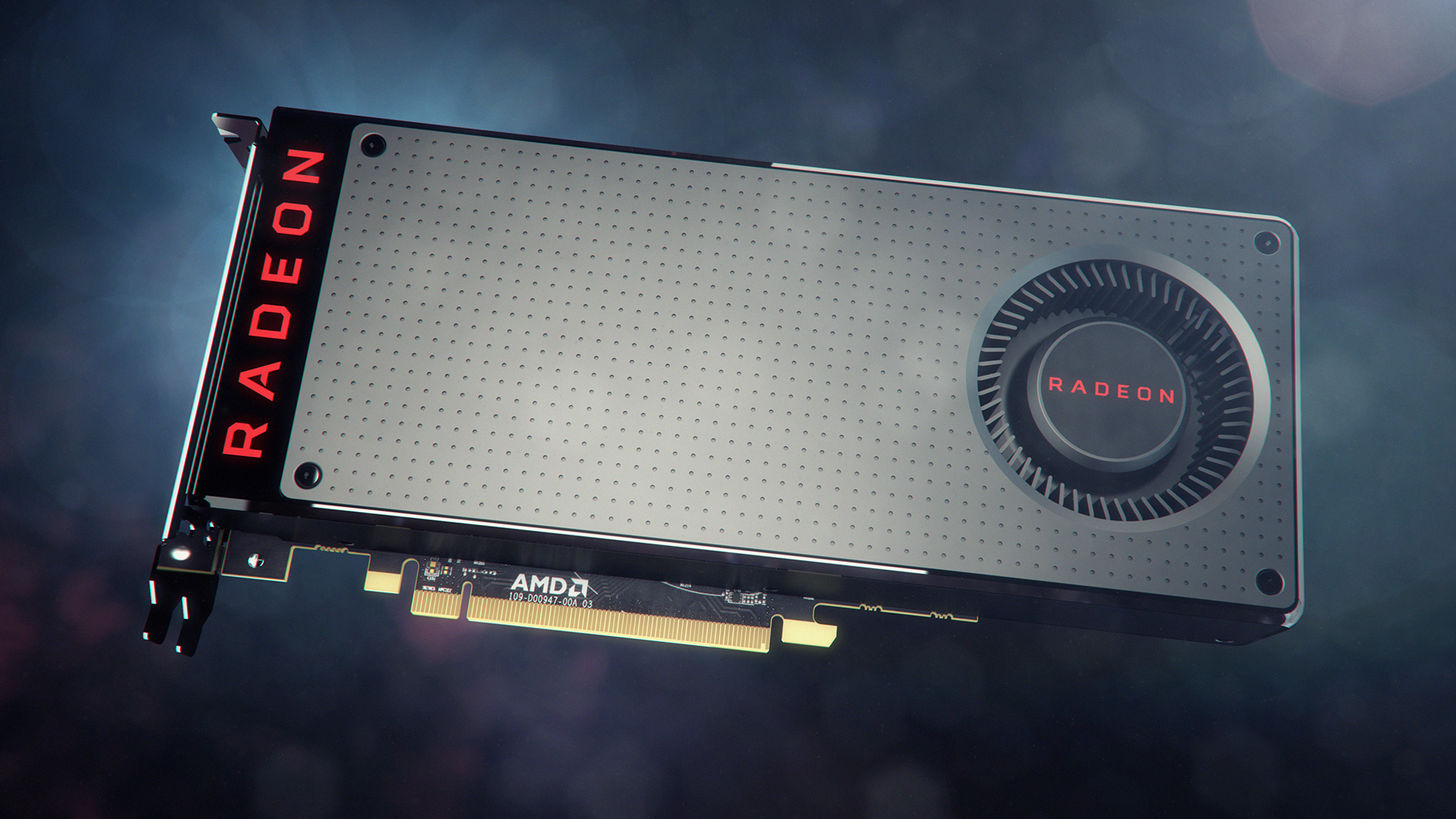
AMD is hoping to capture the minds and hearts of all gamers by introducing a new line of Polaris graphics cards that focuses on affordability on top of performance.
First announced at Computex 2016, AMD has finally pulled the wraps off its new flagship Radeon RX 480. The GPU is based on AMD's smaller and more efficient 14nm FinFET process. The company promises it deliver over five teraflops of performance for premium VR gaming experiences and only eats up 150-watts at most.
The graphics card also comes with 36 compute units on-board and DisplayPort 1.4 to push HDR experiences.
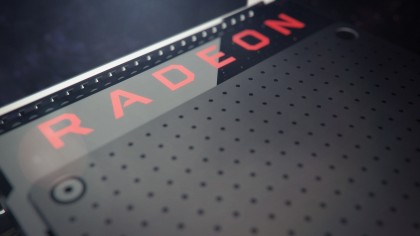
And with the Radeon RX 480 priced at $199 for the 4GB GDDR5 model, AMD will effectively have the most affordable VR-ready graphics card on the market. The 8GB model isn't too much of an extra expense either, priced at a slightly higher $239.
That said, the RX 480 isn't the most powerful card we've seen yet and it sticks to the tried and true GDDR5 video memory. The Nvidia GTX 1080 and GTX 1070 easily trump it in raw power, but as AMD has shown before you can outpace Nvidia's new flagship with two RX 480 paired in Crossfire.
Perhaps what's more impressive is AMD says it can put the Radeon RX 480 in a gaming laptop as either a more efficient part or the a chip with the full-fat 150W performance of the desktop part.
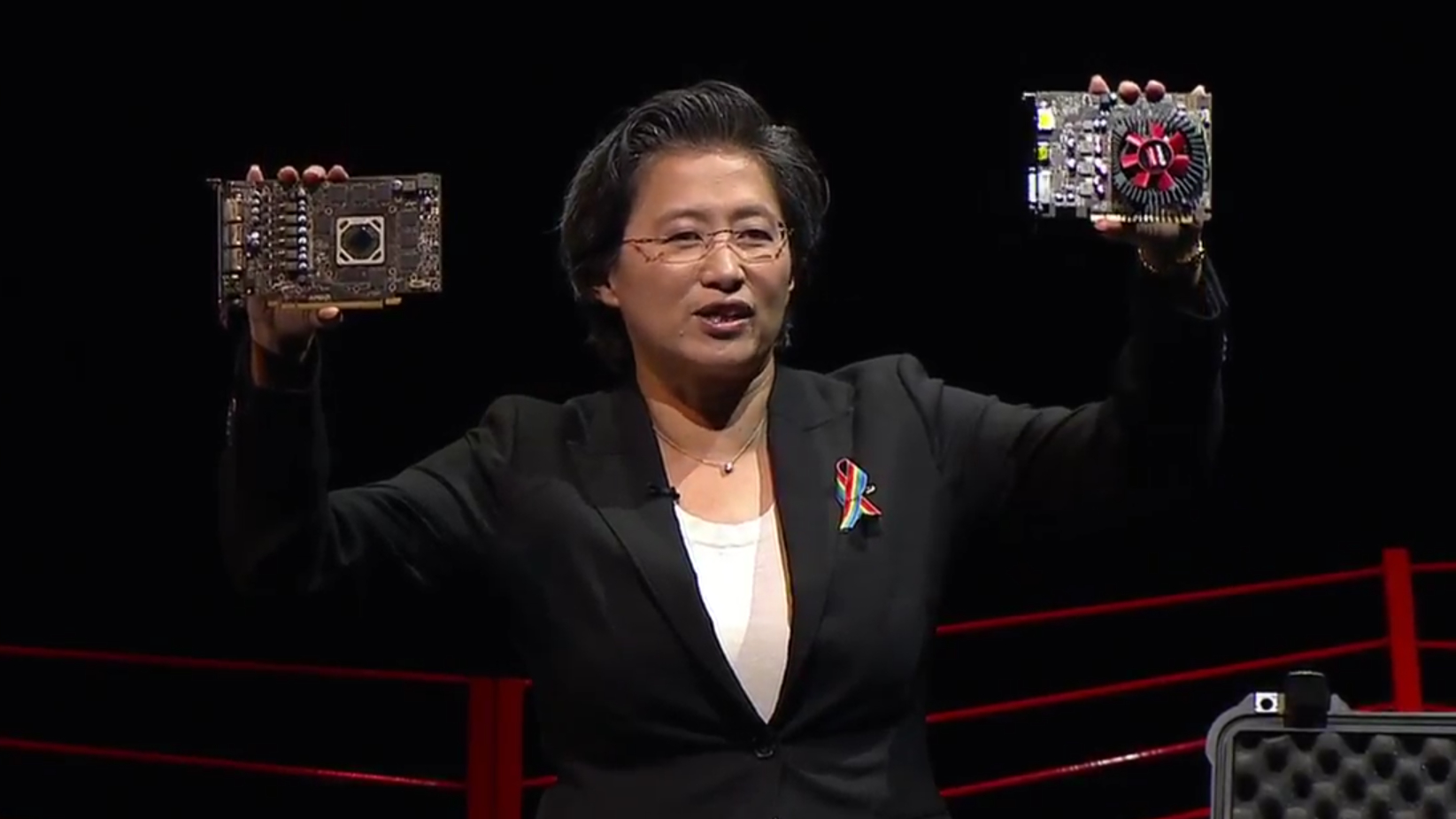
A dynamic duo
AMD also announced to additional GPUs in the form of the Radeon RX 470 and Radeon RX 460, which you might remember seeing at E3 2016. The earlier is being pushed for premium HD gaming experiences, offering more than four teraflops of performance, 32 compute units and 4GB of video RAM.
Get daily insight, inspiration and deals in your inbox
Sign up for breaking news, reviews, opinion, top tech deals, and more.
Meanwhile, the Radeon RX 460 is AMD's bottom ringer rated for above two teraflops, 14 compute units and only 2GB of GDDR5 RAM.
AMD has yet to announce pricing and availability for these to graphics cards.
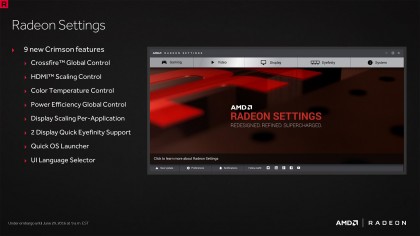
It's all in the software
On top of the new GPUs, AMD has also released some new information on its latest software designed for Polaris including a new version of Crimson with nine new settings. AMD software hub will now allow users to configure their experience from Crossfire control, to tweaking the color temperature and power efficiency.
Additionally, AMD is introducing WattMan to let users take direct control over how their graphics card performs. As a replacement for AMD OverDrive, the program grants access to features like simple GPU and memory control, setting power limits and even fine tuning the GPU frequency curve. Of course, like any modern computer component, there's also the option of setting advanced temperature and fan controls.
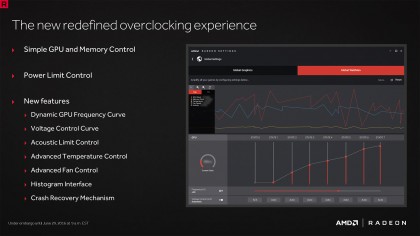
Of course, there are also performance improvements in tow. AMD has given Polaris' connectivity a good once over and now it supports both a HDR color space and FreeSync on 5K monitors with a 60fps refresh rate. LiquidVR has also been given an update and now TrueAudio assigns part of the GPU to solely process audio for a more realistic sound space in VR.
- AMD Polaris and Nvidia Pascal are heating up the graphics card world
Kevin Lee was a former computing reporter at TechRadar. Kevin is now the SEO Updates Editor at IGN based in New York. He handles all of the best of tech buying guides while also dipping his hand in the entertainment and games evergreen content. Kevin has over eight years of experience in the tech and games publications with previous bylines at Polygon, PC World, and more. Outside of work, Kevin is major movie buff of cult and bad films. He also regularly plays flight & space sim and racing games. IRL he's a fan of archery, axe throwing, and board games.
